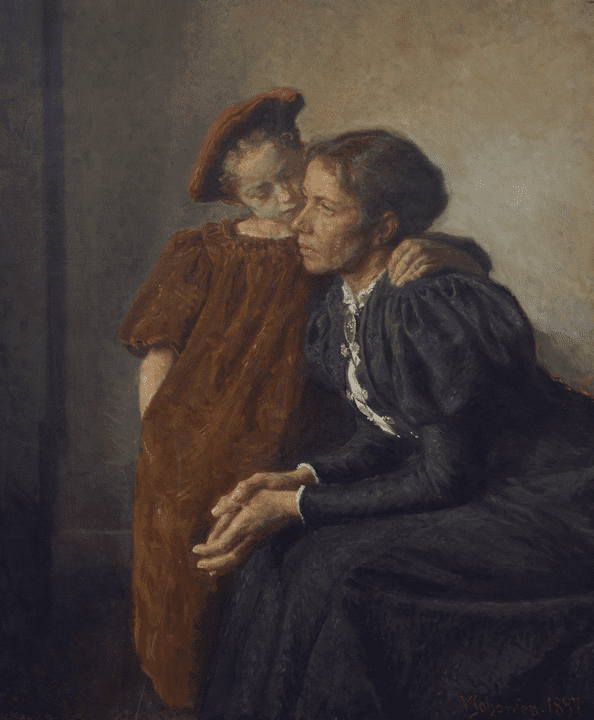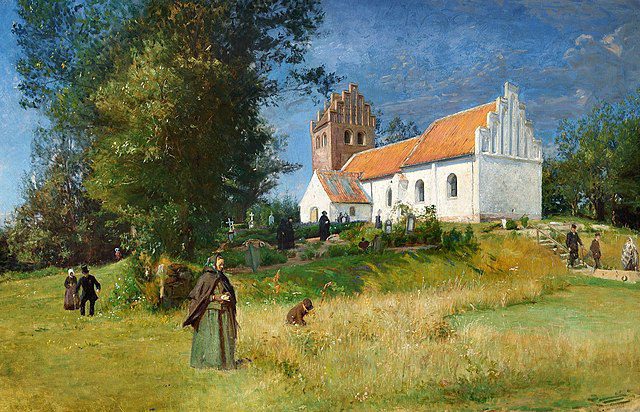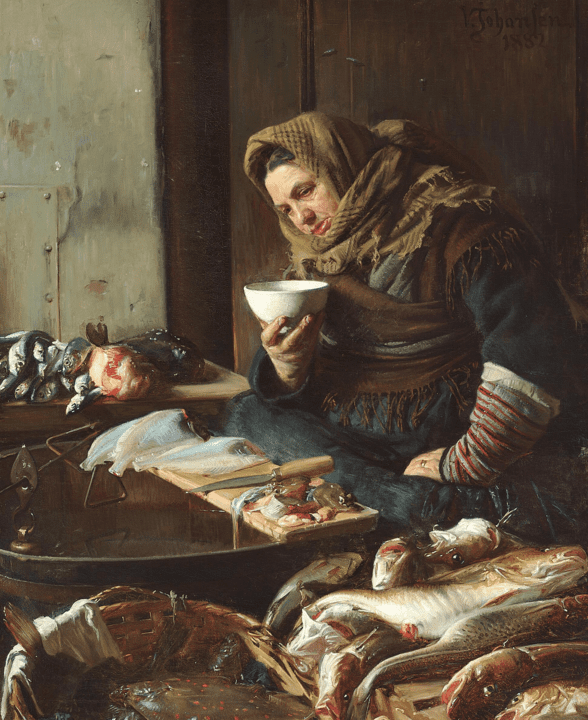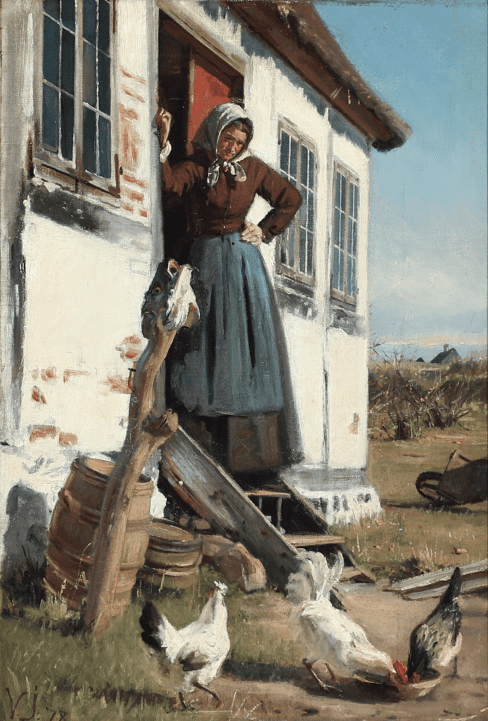
Viggo Johansen, born on January 3, 1851, in Faaborg, Denmark, emerged as a prominent figure in Danish art during the late 19th and early 20th centuries. Renowned for his luminous depictions of Danish landscapes and the play of light on canvas, Johansen’s artistic journey unfolded against the backdrop of societal change, cultural movements, and a profound connection to his native surroundings.
Early Artistic Prowess
Johansen’s artistic prowess became evident early in his life. Encouraged by his parents, he pursued his passion for art and enrolled at the Royal Danish Academy of Fine Arts in Copenhagen. Under the tutelage of influential artists such as Peder Severin Krøyer and L.A. Ring, Johansen honed his skills and embraced the prevailing naturalist tendencies of the time.

The Danish countryside, with its rolling hills, serene coastlines, and picturesque villages, became a significant source of inspiration for the young artist. Johansen’s early works exhibited a commitment to capturing the essence of his surroundings, foreshadowing a lifelong dedication to portraying the beauty of the Danish landscape.
Fynboerne and Cultural Identity
Johansen was a key member of the Fynboerne, a group of artists associated with the island of Funen, which included prominent figures such as Fritz Syberg and Peter Hansen. The Fynboerne, influenced by the naturalist movement, sought to depict rural life and landscapes with an authentic and unembellished approach. Johansen’s association with this group deepened his connection to the cultural and artistic identity of Funen.
The artists of Fynboerne shared a commitment to portraying the unique charm of Funen’s countryside. Johansen’s paintings, characterized by their atmospheric rendering of light and meticulous attention to detail, contributed to the group’s collective exploration of regionalism and cultural identity. Through their art, the Fynboerne sought to preserve the distinctive character of Funen’s landscapes and communities.
Luminism and Light Studies
Johansen’s fascination with light and its transformative effects on the visual experience became a defining feature of his artistic style. Influenced by the luminist movement, which sought to capture the subtle nuances of light in the natural world, he dedicated himself to the study and representation of varying light conditions. Johansen’s mastery in rendering the ephemeral qualities of light elevated his works beyond mere representations of landscapes.
The artist’s light studies, often featuring tranquil coastal scenes or quiet interiors, showcased his ability to convey the emotional resonance of a moment. Johansen’s paintings bathed in the soft, northern light of Denmark became poetic expressions of the beauty inherent in everyday life. His commitment to luminism contributed to the evolution of Danish landscape painting and established him as a leading figure in the exploration of light’s visual poetry.
The Fading Light of Symbolism
As the 19th century transitioned into the 20th, Johansen’s art underwent a subtle shift influenced by Symbolism. Symbolist tendencies began to emerge in his works, adding layers of metaphor and introspection to his visual narratives. The subjects of his paintings often carried symbolic significance, exploring themes of life, death, and the passage of time.

Johansen’s symbolic exploration did not detract from his commitment to portraying the Danish landscape; rather, it added a contemplative depth to his art. The fading light in his Symbolist works mirrored a broader cultural shift and Johansen’s own reflections on the transitory nature of existence. This period of his artistic evolution further demonstrated his versatility and willingness to engage with changing artistic currents.
Public Recognition and Legacy
Johansen’s dedication to capturing the essence of Danish light and landscapes earned him public recognition and accolades. His participation in international exhibitions, including the Exposition Universelle in Paris, brought Danish art to a global audience. Johansen’s paintings, characterized by their ethereal beauty and emotional depth, resonated with viewers and garnered critical acclaim.
The legacy of Viggo Johansen endures through his impact on Danish art and his contributions to the cultural identity of Funen. His paintings, displayed in prominent museums and galleries, serve as a testament to his ability to translate the fleeting qualities of light into enduring works of art. Johansen’s influence extended beyond his own generation, inspiring subsequent artists to explore the rich visual possibilities offered by the Danish landscape.
Late Years and Reflections
In his later years, Johansen continued to paint and reflect on the evolving art scene. The changing dynamics of early 20th-century art, marked by the advent of modernism, prompted him to contemplate his own place within this shifting landscape. Despite the challenges posed by changing artistic currents, Johansen remained committed to his unique vision, staying true to the luminous aesthetic that defined his body of work.

Viggo Johansen passed away on December 18, 1935, leaving behind a legacy that transcends the boundaries of time and geography. His paintings, characterized by their ethereal beauty and the poetic treatment of light, continue to captivate art enthusiasts and scholars alike. Johansen’s life’s work stands as a luminous tribute to the Danish landscape and its transformative power when captured by an artist whose brush was attuned to the subtleties of nature’s radiant glow.




